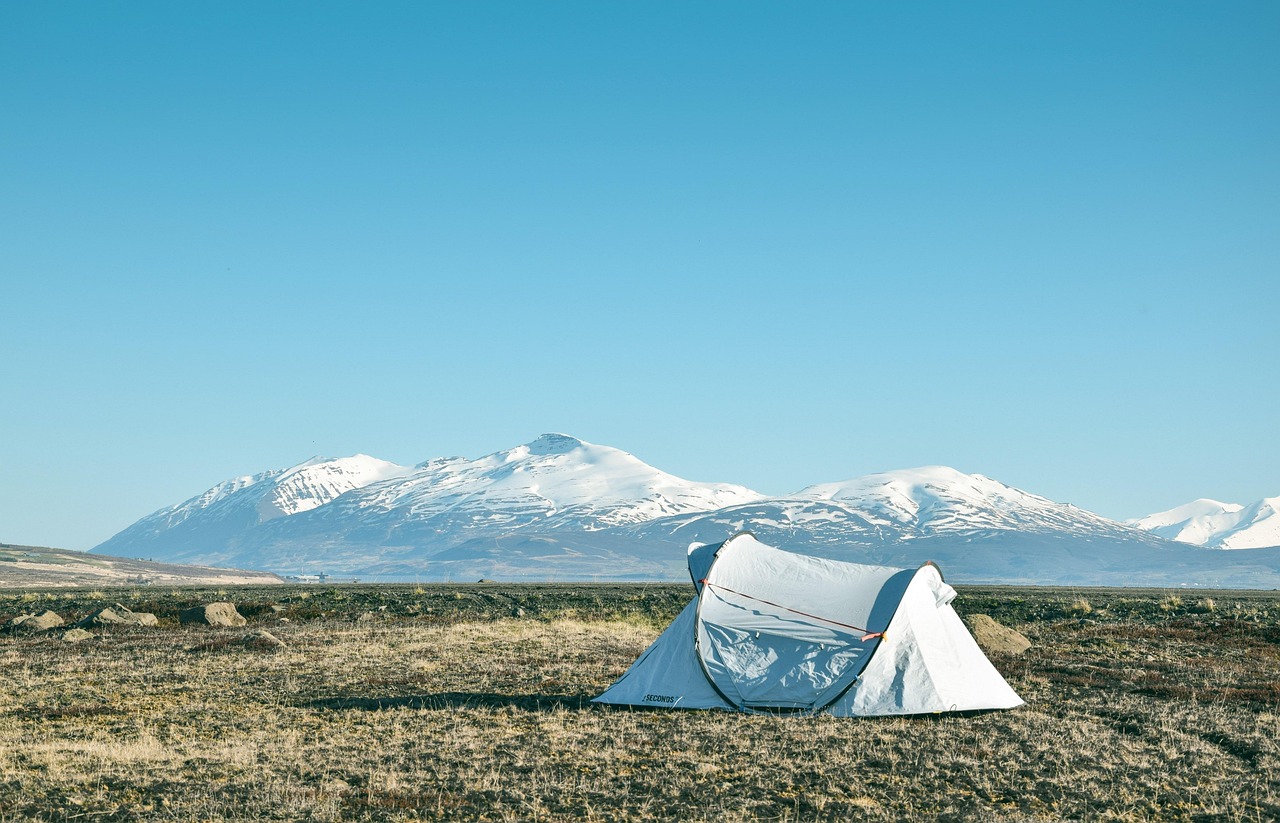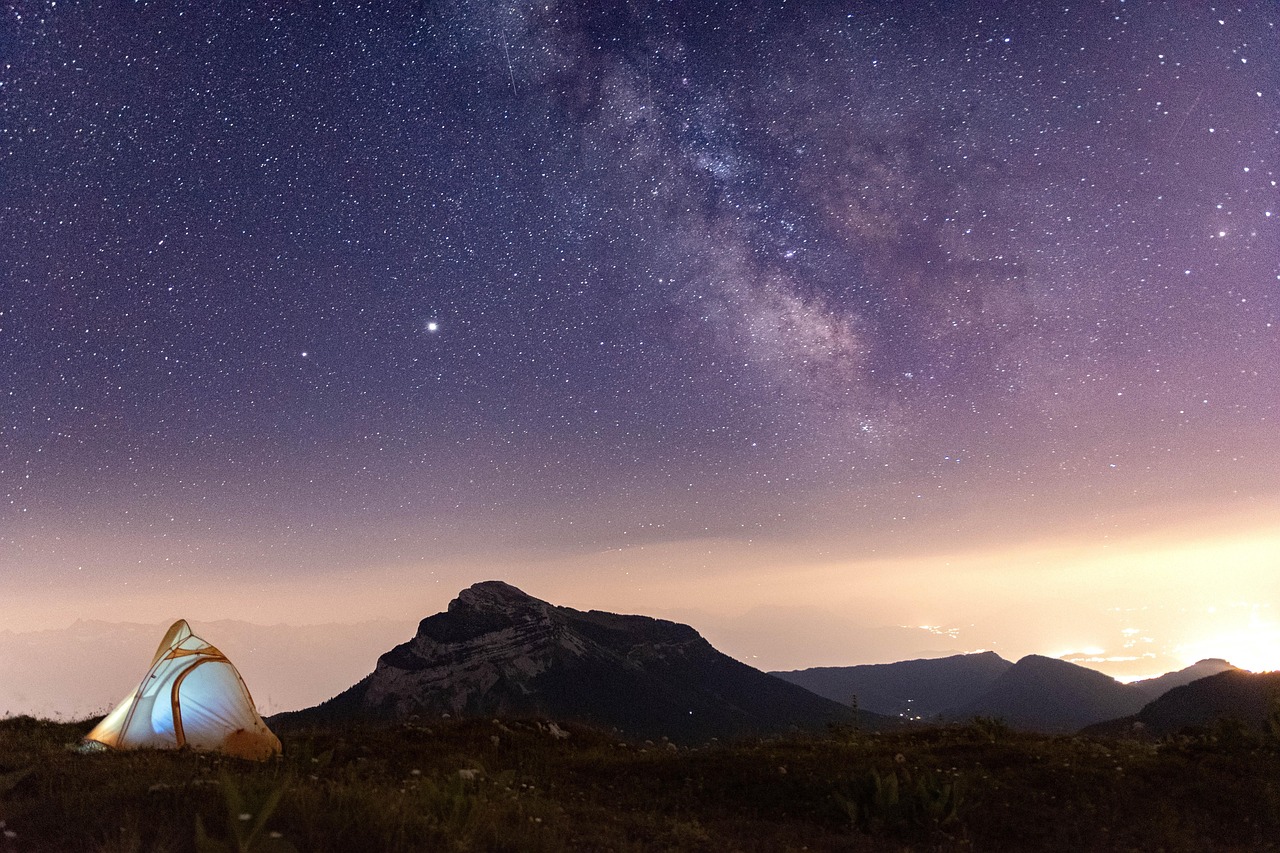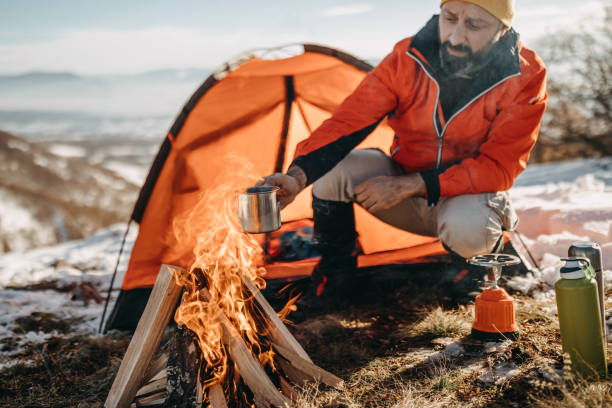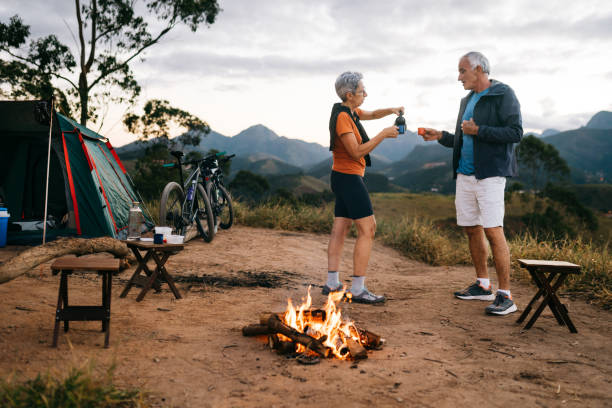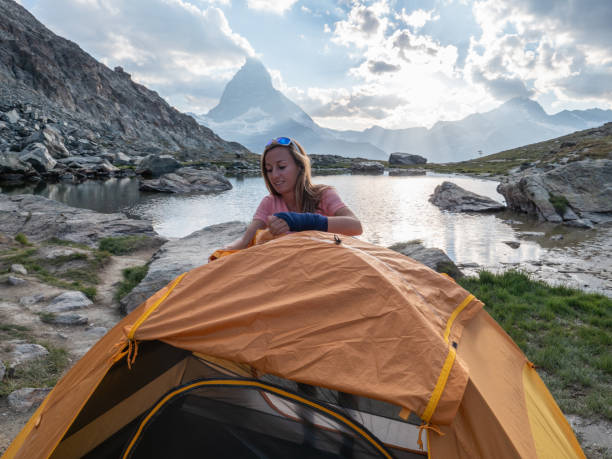There’s something beautifully humbling about solo backpacking. Just you, your gear, and the trail ahead. But if there’s one thing we’ve learned over the years of wandering through misty forests, scaling switchbacks, and camping under star-drenched skies, it’s that your shelter can make—or break—your trip. That’s where the top lightweight tents come! Seriously, the difference between waking up refreshed or wrestling condensation at 3 AM often comes down to your tent.
For us, weight matters, but not at the cost of comfort or weather resistance. We’ve tested our fair share of lightweight solo tent options on everything from rocky ridgelines to damp valley floors, and through all those miles, some ultralight shelters truly stood out. This list isn’t just about specs—it’s about real-life experience: setup in the wind, space for gear, how well it holds up during a surprise downpour, and those little details you only notice on day three of a hike.
So if you’re a solo backpacker looking to lighten your load without sacrificing reliability, here’s a deep dive into the lightweight tents that have earned a spot in our packs.
Table of Contents
- NEMO Ultralight Backpacking Tent
- Lanshan Oudoor Ultralight Camping Tent
- ALPS Mountaineering Lynx Tent
- Camppal Hunting Backpacking Tent
- MC TOMOUNT Backpacking Tent
- Night Cat Backpacking Tent
- Naturehike Cloud-Up Tent
- Our Verdict!
- How to Choose the Top Lightweight Tents for Solo Backpackers
- Weight & Packability
- Weather Resistance
- Livable Space & Vestibule Storage
- What is the top of a tent called?
- What is lightweight for a tent?
- Which tent type is the most popular and widely used?
7
NEMO Ultralight Backpacking Tent
We took the NEMO Ultralight Backpacking Tent out on a chilly thru-hike of the Foothills Trail in January—a real test for any tent. What stood out right away was how easy it was to pitch. Even in fading light and frozen fingers, setup was quick and intuitive. The semi-freestanding design didn’t slow us down one bit.
We were a little skeptical at first about how “livable” such a lightweight tent could be, but NEMO proved us wrong. The patent-pending Flybar and volumizing guy-outs really make a difference. Instead of that coffin-feel many ultralight tents give off, we had room to sit up, change clothes, and move around without elbowing the walls.
The OSMO fabric also performed incredibly well. One night brought relentless drizzle, and the tent didn’t sag or stretch like some cheaper silnylon shelters. It stayed taut, and we stayed dry. We also appreciated that the fabric is PFAS-free and made of 100% recycled yarn—light on the back and on the planet.
It packed down small enough to squeeze between the saddlebags on a buddy’s off-road motorcycle trip through Patagonia. Add in the oversized doors and vestibules, and this ultralight solo tent is perfect for solo travelers who still want a bit of elbow room and gear coverage. Just note—it’s really more of a 1.5-person tent. You could squeeze in a friend in a pinch, but it shines brightest as a roomy solo shelter.
Feel free to visit official brand site for more interesting choices.
Pros:
- Incredibly lightweight, ideal for long-distance backpacking
- Quick and easy setup even for solo campers
- Excellent ventilation with mesh canopy and strategic air vents
Cons:
- Higher price tag may not suit budget-conscious beginners
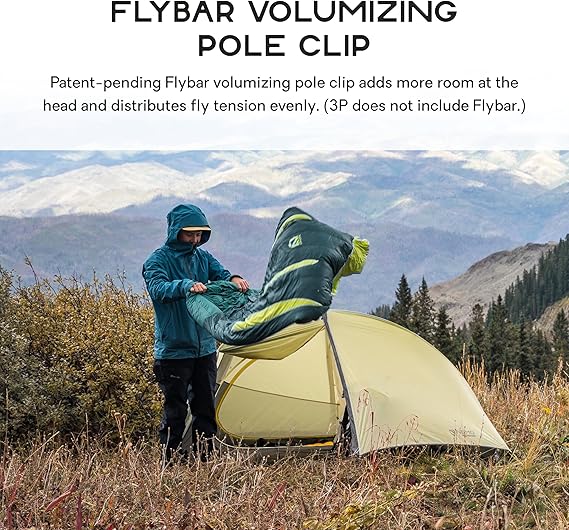
6
Lanshan Oudoor Ultralight Camping Tent
Best Value for Money. We’ve taken the Lanshan Oudoor Ultralight Camping Tent on everything from quiet weekends in the Adirondacks to wind-whipping ridge hikes on the Appalachian Trail in Maine. And after several years of use, it’s still holding strong in our rotation.
At just over 1kg, this is a serious ultralight contender. We used it with budget-friendly Cascade trekking poles and a DIY Tyvek footprint to keep the floor intact—and that combo worked wonders. Yes, the materials are thin (that’s the tradeoff for the weight), but with care and proper setup, this tent is surprisingly tough. We’ve camped at high elevations in 20mph gusts and stayed warm and cozy through it all.
Setup can be tricky in the wind—one breezy desert trip had us chasing the tent like a kite—but once staked down, it’s solid. Practice setup a few times before hitting the trail and you’ll be golden. We did upgrade the stakes to a set of longer ones for added security.
Interior-wise, it’s a dream for solo hikers. Tons of space for one person plus a dog or gear, and the high-density mesh keeps bugs out while letting the breeze in. We’ve stayed in more expensive tents that didn’t perform half as well. For budget-minded solo backpackers who don’t want to compromise on performance, this tent is an excellent gateway into the ultralight world.
Pros:
- Extremely light and compact—perfect for minimalist backpackers
- Surprisingly weather-resistant with solid waterproofing
- Dual-door design enhances accessibility and airflow
Cons:
- Requires trekking poles for setup, which may be inconvenient for some users

5
ALPS Mountaineering Lynx Tent
We call this one the “tank” of solo tents. The ALPS Mountaineering Lynx Tent might not be the lightest on this list (we clocked it at just over 4 lbs with all the fixings), but what you get in exchange is rugged reliability that’s hard to beat.
We’ve used this lightest solo tent on countless weekend treks where weight wasn’t the #1 concern—trips where unexpected storms and rocky campsites were more likely than ultralight bragging rights. The freestanding design means you can set it up anywhere, and we’ve pitched it on everything from hard desert crust to forest duff. Setup is as simple as snapping two aluminum poles into place. Even our least experienced hiker buddy nailed it in under five minutes.
It handled a multi-day downpour in the Smokies without a drop getting in, thanks to the factory-sealed seams and 75D rainfly. Ventilation is solid too—half-mesh walls keep air moving, which is a blessing on muggy summer nights.
Inside, it’s cozy but not cramped. We had room to stash gear in the vestibule and still stretch out without brushing the tent walls. The included mesh pockets and gear loft helped us stay organized—no more fumbling for a headlamp in the dark.
If you’re a beginner looking for an affordable, no-nonsense tent, this one checks every box. The factory stakes are, frankly, terrible—do yourself a favor and grab a set of MSR Groundhogs. But otherwise? Rock solid. In fact, we’ve seen folks ditch ultralight name-brand tents halfway through a trip to borrow this one. It’s that dependable.
Check out this detailed review by Camping Guidance on YouTube!
Pros:
- Rugged build and durable materials handle tough conditions
- Excellent interior space and headroom for a solo camper
- Easy setup with two-pole, free-standing design
Cons:
- On the heavier side compared to other backpacking tents
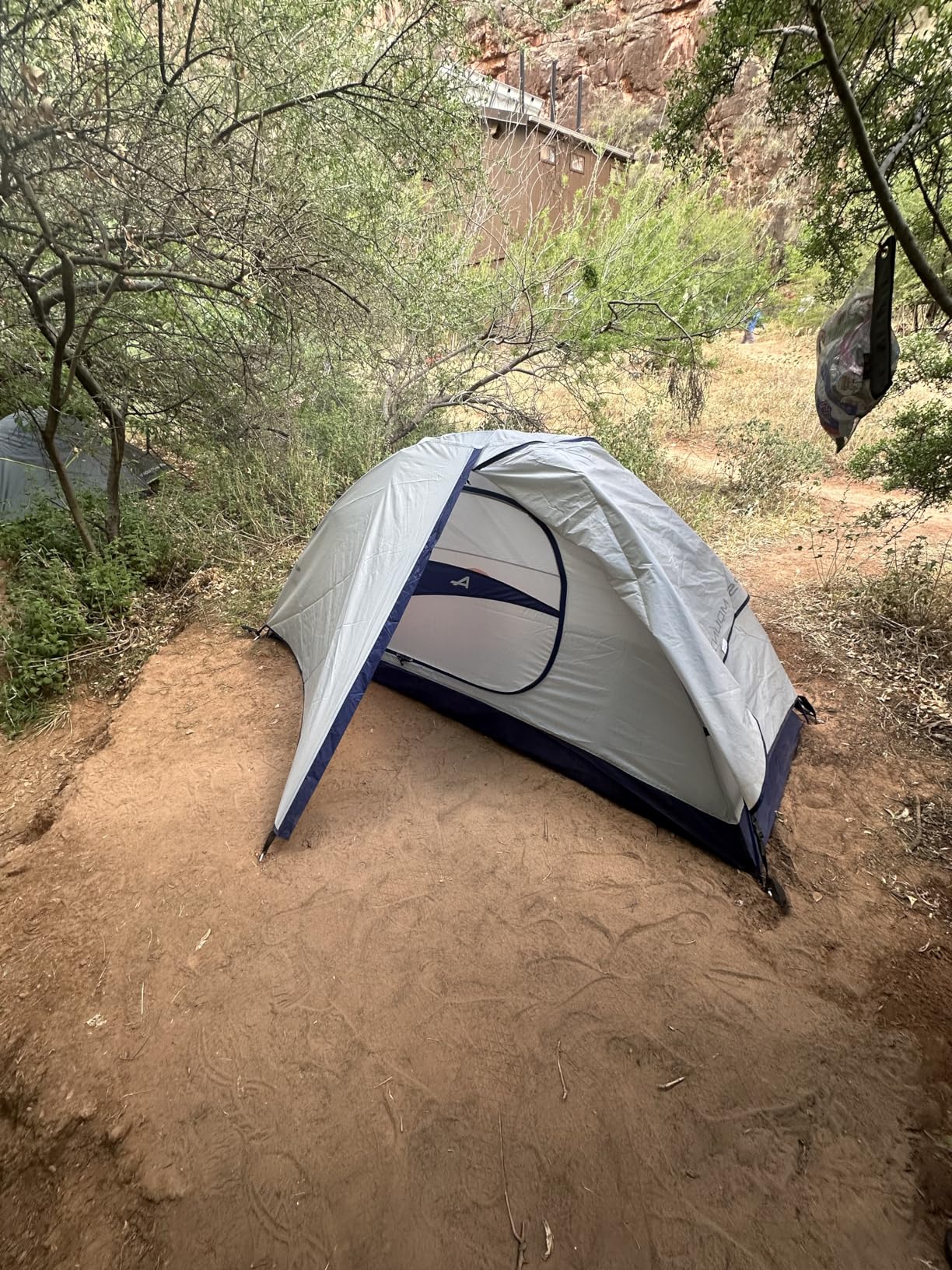
4
Camppal Hunting Backpacking Tent
Best Durability. We were a little unsure about this one at first. “Camppal” isn’t a name you see tossed around in ultralight forums much, but man, did the Camppal Hunting Backpacking Tent deliver on value and toughness.
We brought it on a solo desert camping trip, mostly to test its claim of a 3-minute setup—and yep, it’s accurate. Just feed the single ridge pole through, stake down the four corners, and boom—you’re home. Super beginner-friendly. We appreciated the oversized stuff sack too; it made repacking a breeze even after a dusty morning teardown.
At under 4 lbs and built with a 3500mm waterproof rating, this thing was made for unexpected weather. One night brought wind so fierce it blew away our cook pot lid and knocked over a buddy’s chair—but this little tent held firm. One of the windshield corners did tear near the stake point on a later trip, but considering the price, that’s not a dealbreaker for us.
Space-wise, it’s snug. Once our sleeping pad and bag were in, there wasn’t much room to spare. You’re not going to fit a cot or even a full-sized pack inside, but it’s perfect for sleeping and tossing boots under cover.
All told, this best ultralight solo tent surprised us. It’s small, quick, and packs some serious punch for a budget-friendly option. Just be realistic about the space—it’s strictly a one-person affair. If you’re tall or carry bulky gear, you might feel cramped. But if you want no-fuss shelter and a strong defense against the elements, this little guy’s got your back.
You might also be interested in the best camping tents for all seasons. If yes, give it a quick read!
Pros:
- Excellent wind resistance and weatherproofing for harsh environments
- Plenty of storage and interior space, especially near the foot
- Great value for multi-season use, especially in cold conditions
Cons:
- Setup can be a bit more involved, especially for first-time users
3
MC TOMOUNT Backpacking Tent
We took the MC TOMOUNT Backpacking Tent for a real endurance test—five days car camping up near Pikes Peak in early spring. The nights dipped below freezing, with one morning welcoming us with a layer of freezing rain and light snow. At 9,000 feet, you find out real fast if your gear is up to the task. This tent passed with flying colors.
Setup was a breeze—ten minutes tops, even in cold weather with gloves on. The aluminum poles clicked into place easily, and the whole structure felt sturdy from the get-go. The double-layer design offered solid insulation during those cold evenings, and that ripstop polyester fly didn’t let a drop in. With winds gusting around 20mph, we only guyed out the top and tail, and it held firm.
Inside, it was downright roomy. At 6 feet tall with a 25-inch pad, I had space to stretch and stash my gear. I even brought in two 3-gallon buckets of fresh greens to protect them from the cold—yes, I grow my own food—and there was still enough room to sleep comfortably. The vestibule handled my solar generator like a champ, and the rear ventilation window kept condensation from creeping in overnight.
Is it ultralight? Not exactly—at about 4.65 pounds, it’s more of a “lightweight but built like a tank” kind of tent. But for the price, durability, and sheer comfort in rough conditions, this one punches well above its weight. My only gripe? The little gear loft was flimsy, but honestly, I never used it anyway. If you want peace of mind when nature throws a curveball, the TOMOUNT delivers.
Also, feel free to check out our exclusive roundup of the best camping tents for beginners!
Pros:
- Stands up well to rain, snow, and wind—reliable in rough weather
- Spacious interior with excellent ventilation and smart layout
- Aluminum poles and sturdy materials provide great durability
Cons:
- Gear loft is poorly designed and not very functional
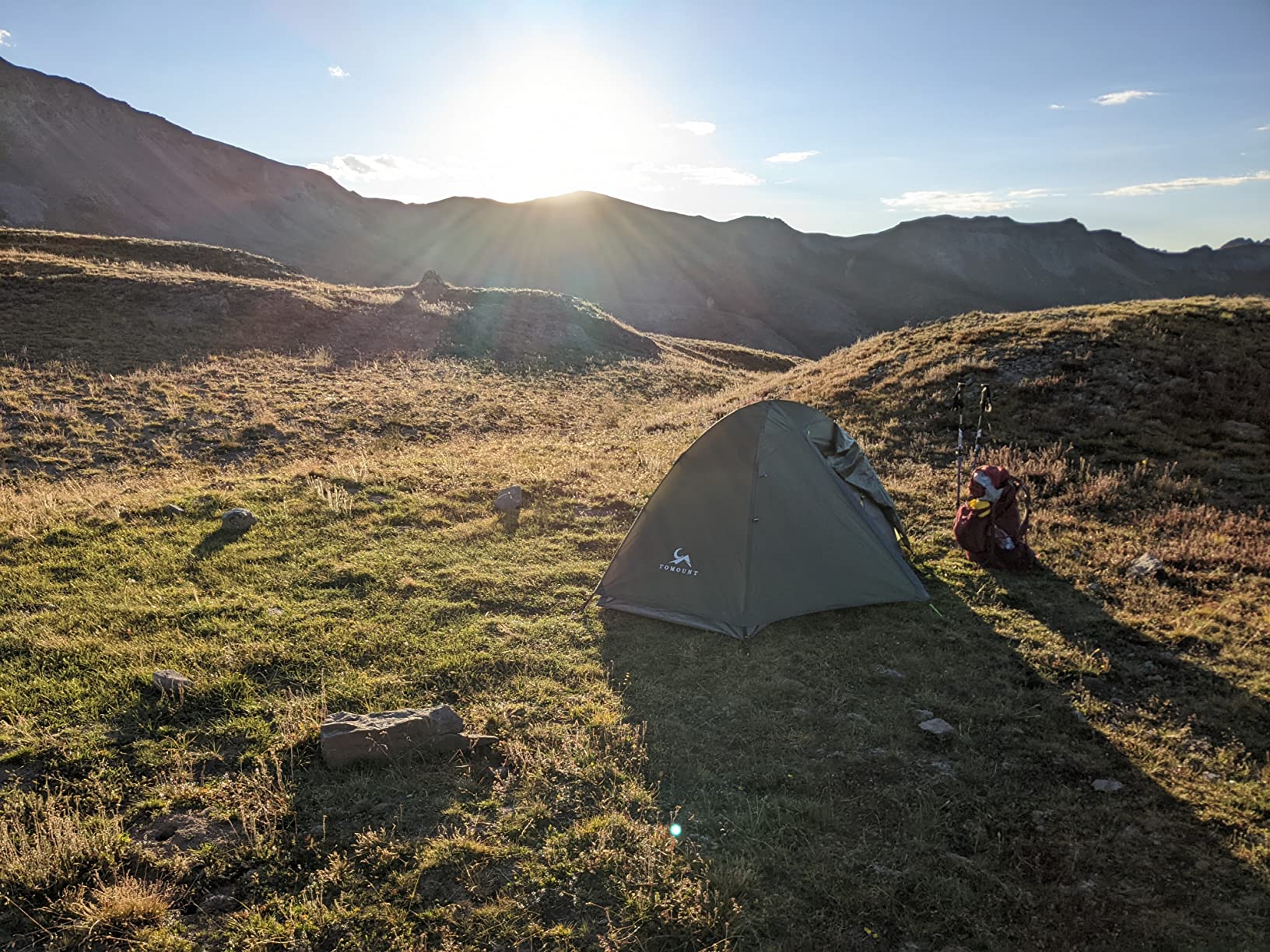
2
Night Cat Backpacking Tent
We grabbed the Night Cat Backpacking Tent for a quick solo trip along the coast and ended up relying on it more than we expected. It’s not just a tent—it’s sort of a loophole shelter. On college campuses and “No Tents Allowed” beaches, it looks more like a sunshade. Unzip the sides and boom—it’s legal lounging. Zip them up and you’re in stealth-camping mode. Handy? You bet.
Setup was lightning fast. The clip-on system meant no fussing with pole sleeves—we had it standing in about a minute. Fiberglass poles aren’t high-end, but they’re plenty strong if you’re not rough on your gear. We hit a mild rainstorm and some beach wind, and the Night Cat stayed surprisingly stable. Taped seams and 3000mm waterproofing kept us dry, though we’d recommend guying it out fully if you’re expecting real weather.
Interior space is cozy but smart. At 7 feet long, it fit me (5’10”) and my sleeping pad with space for my daypack inside and shoes in the mini vestibule. There’s not much headroom to sit up fully, but for lying down and stashing your gear, it’s more than enough.
That said, it’s a budget build. You won’t confuse it with a high-end bivy or solo backpacking tent. It’s a little bulky packed down and not the most compact option we’ve used. But for quick setups, naps between college classes, or sneaky overnights in off-limits zones, this tent works harder than it should for $50. Just take care of it, and it’ll keep showing up when you need it.
Pros:
- Very fast and simple clip-on setup—great for quick shelter needs
- Lightweight and compact enough for short backpacking trips
- Mesh design offers good airflow and insect protection
Cons:
- Build quality feels cheap and may not last under frequent use
1
Naturehike Cloud-Up Tent
Best Overall. Ah, the Cloud-Up. If there’s one solo tent we keep coming back to, it’s this one. Light, compact, and remarkably solid when the weather turns ugly—it’s like that reliable old friend who shows up with a cold beer and a dry tarp just when the clouds start to roll in.
We tested the Naturehike Cloud-Up Tent during a soggy 3-day trip in the Cascades. Rain came down non-stop the first 24 hours, and not a single drop made it inside. The tent fabric—210T polyester with a PU3000 rating—held strong, and the seams stayed bone dry. We’ve since pitched it on alpine ridgelines and lakeside meadows, and it always packs down tight into a 16-inch bag that fits cleanly in our backpack’s bottom compartment.
Setup? A breeze. One set of aluminum poles, snap-snap-snap, and you’re done. It’s even manageable in the dark—we clocked setup and teardown at around 5 minutes flat. That kind of simplicity means more time for watching sunsets or catching up on trail journal entries.
What makes the Cloud-Up shine, though, is its livability. The footprint is spacious for a one-person tent—we could sit up, shift around, and even keep our pack in the vestibule without sacrificing sleep space. One detail we loved: the way the interior widens from waist to shoulders. No more waking up with your elbow jammed against the tent wall. There’s even room around your pad to stash a book, headlamp, or snacks.
If we had to nitpick, the rainfly wasn’t cut perfectly tight in the front. It billowed slightly in heavy wind, though never let in rain. Still, for the price, weight, and overall performance, this is hands-down our favorite solo tent for everything from thru-hikes to weekend trips. Bonus points for coming with a footprint included—something most premium tents still make you pay extra for.
Pros:
- Lightweight with compact packing size, ideal for serious backpackers
- Easy and fast setup, even in low light or poor weather
- Footprint included—saves money and adds floor protection
Cons:
- Rainfly fit isn’t perfect and may flap in strong wind

Our Verdict!
From the exclusive roundup of the best lightweight tents for solo campers, we selected the Naturehike Cloud-Up Tent as the ultimate choice, our Best Overall option, given its extraordinary performance and high value offering. On the other hand, there were options that stood out for us on the basis of one particular feature. So, what are they? Let’s check them out!
- Best Value for Money: Lanshan Oudoor Ultralight Camping Tent
- Best Durability: Camppal Hunting Backpacking Tent
How to Choose the Top Lightweight Tents for Solo Backpackers
Looking for the best lightweight solo tent? Right? Well, when you’re heading out alone into the wild, your tent becomes more than just shelter—it’s your sanctuary, your storage, and sometimes your escape from brutal weather. Here’s what we prioritized when hunting for the perfect lightweight tent for solo adventures:
1. Weight & Packability
The number one concern for solo backpackers is how much weight you’re hauling. A good lightweight tent should weigh under 4 pounds and pack down small enough to fit into or onto your backpack without hogging all the space. Look for tents made with ultralight materials like 210T polyester or silnylon, and always check packed dimensions—especially if you’re tight on room for longer treks.
2. Weather Resistance
You need a lightweight solo tent that doesn’t just keep out light drizzle, but holds up when the skies turn ugly. A solid PU3000mm waterproof rating or higher is ideal, along with durable flooring and a tight rainfly. Wind resistance is another big one—aluminum poles and a low-profile shape help a tent stay upright in gusty conditions. If you’re heading into high altitudes or shoulder seasons, double-layer tents offer better insulation and protection.
3. Livable Space & Vestibule Storage
Just because you’re solo doesn’t mean you want to feel like you’re sleeping in a coffin. Make sure the interior has enough headroom to sit up, space for a sleeping pad, and maybe even a little extra for a few essentials. Vestibules are a game-changer too—having a covered area outside the tent for your boots or pack keeps gear dry and gives you more breathing room inside.
What is the top of a tent called?
The top of a tent is commonly called the rainfly or canopy, depending on the tent’s design. The rainfly is the waterproof outer layer that covers the top to protect against rain and wind. In single-wall tents, the top may simply be the roof of the main structure. Some tents also feature a vent or peak at the top for airflow.
What is lightweight for a tent?
A solo ultralight tent typically weighs between 2 to 4 pounds, making it ideal for solo backpackers who need to minimize pack weight. Anything under 3 pounds is considered ultralight. These tents are designed for efficiency—compact, easy to carry, and made with durable but lighter materials. The goal is to reduce load without sacrificing shelter or protection.
Which tent type is the most popular and widely used?
The freestanding double-wall tent is the most popular and widely used type among solo backpackers. It offers the best balance of weather protection, ventilation, and ease of setup. These tents can stand without staking, making them versatile on different terrains. Their inner mesh and separate rainfly design also reduce condensation and boost comfort.
